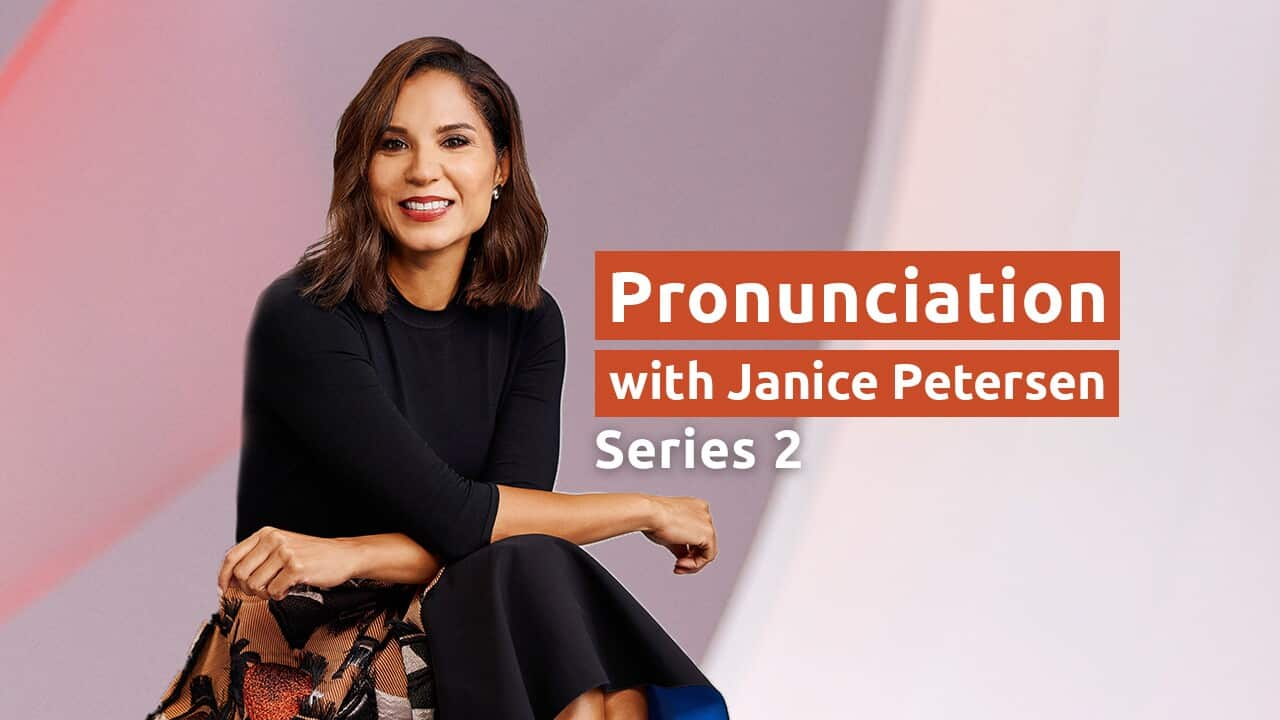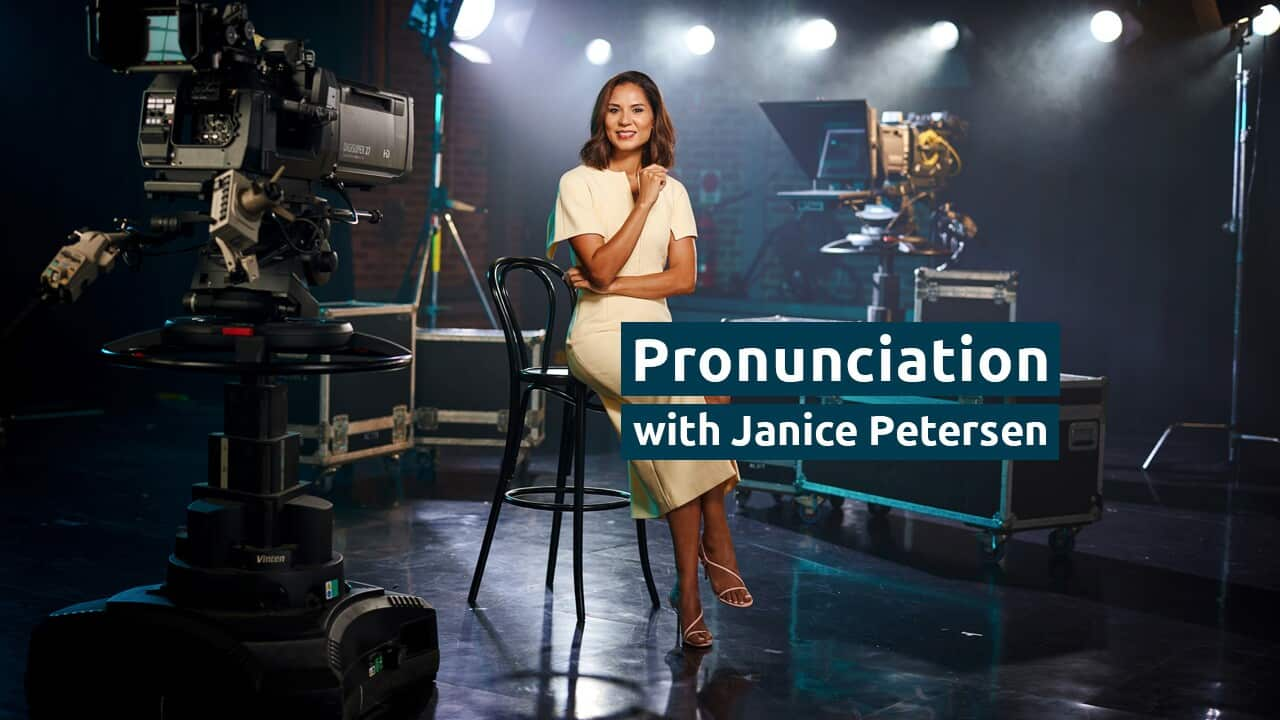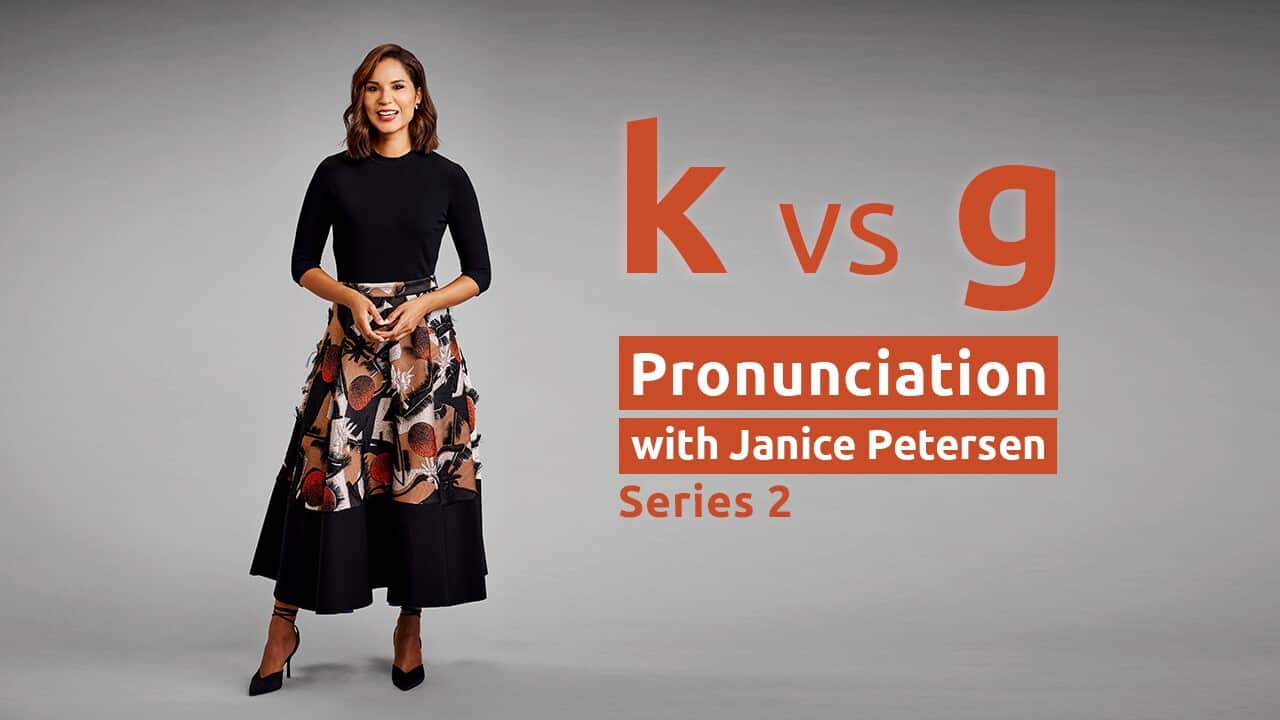Key Points
- Learning objectives: Can pronounce /k/ and /g/.
- First language influence: /g/ is often confused with /k/ with Vietnamese and Portuguese speakers. Cantonese speakers substitute /k/ for /g/ when on the end of words and /g/ sounds are often devoiced at the beginning of words. In Swahili, /g/ is devoiced to /k/ (without vibration of the vocal cords). Burmese speakers pronounce /k/ unaspirated (not pronounced with the sound of a breath). In Bislama, /k/ is written and pronounced as /g/ so speakers do not distinguish between these sounds.
- Text for practise: Kookaburra sits in the old gum tree, Merry merry king of the bush is he, Laugh, Kookaburra laugh, Kookaburra, how great your life must be * First verse of the song * ‘Gay’ has been replaced by ‘how great’.
- Minimal Pairs: /k/ coat, curl, class, crow, clue /g/ goat, girl, glass, grow, glue.
Ol lesen ia oli blong evri Inglis level
Check out the rest of Season 2

Improve your pronunciation | Season 2
If you missed the first season of our popular podcast, now's your chance to catch up!

Improve your pronunciation | Season 1
Transcript:
(Note: This is not a word-for-word transcript)
Kookaburra sits in the old gum tree,
Merry merry king of the bush is he,
Laugh, Kookaburra laugh,
Kookaburra, how great your life must be.
Hi! I’m Janice Petersen, from SBS World News and in this pronunciation lesson we’ll be learning the Kookaburra Song. It was written in 1934 by Marion Sinclair and is famous in Australia.
The kookaburra is a native Australian bird that makes a very unique sound - like a person laughing.
‘Kookaburra’ starts with a /k/ [ke] sound, which can sometimes be confused with the /g/ [ge] , sound in ‘gumtree’. A gumtree is a native Australian tree, home to many animals… including the kookaburra!
Let’s start with some word pairs to see if you can hear the difference between the /k/ and /g/ sounds:
- Class, grass
- Clue, glue
- Coat, goat
- Crow, grow
These sounds are tricky because they sound similar and we make them in similar ways.
The /k/ sound is made when you keep your tongue tip down, the back of your tongue up and release a burst of air. Be careful to keep your tongue tip down because if you put it up, you’ll make a /t/ sound instead.
The /k/ sound can be spelled in different ways. Some common spellings are ‘c’ [see] as in coat, ‘k’ [kay] as in kookaburra, ck [see-kay] as in duck, and cc [see-see] as in soccer.
Let’s try practicing the /k/ sound in some of these words, you might like to repeat after me:
- Kookaburra
- Coat
- Crow
The /g/ sound is made with one important difference to /k/. Keep the back of your tongue up and your tongue tip down, then let the air build up behind the back of your tongue before you release it. Give it a try /g/ /g/ /g/.
If you’re ready, try repeating these words with me:
- Gumtree
- Goat
- Grow
You’ll know you’ve got these sounds right by lightly putting your hand on your throat. The /g/ sound will vibrate in your vocal cords, but the /k/ sound won’t.
Let’s hear how some other learners are doing.
With us today are learners from Bayside Library English class.
Who’s ready to try singing?
Children love this song too, so you might like to teach it to your kids.
CREDITS
Thanks to our educational consultant, Natalie Oostergo from IES College learners from.





